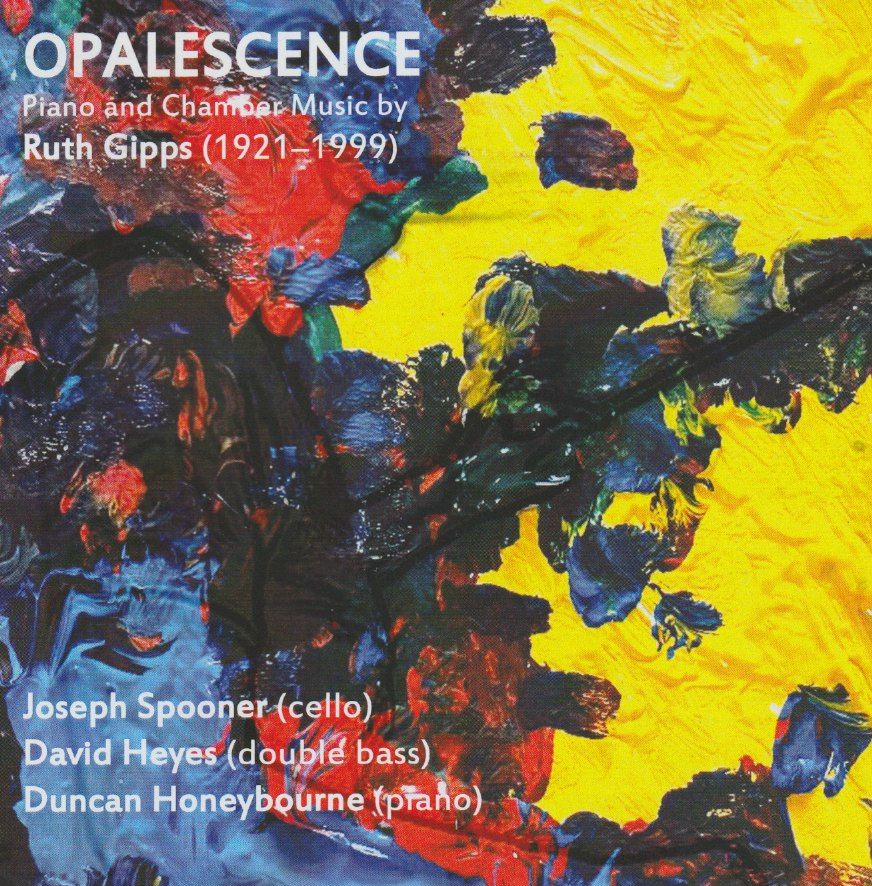Opalescence: The Music of Ruth Gipps
This disc is a real gift to the musical world at large ... superlative performances of beautiful, and often powerful, music

The reawakening of interest in the music of Ruth Gipps (1921-1999) in recent years has been a distinct cause for celebration. Chandos has led the field, but now we have this fascinating disc, Opalescence, from Prima Facie Records, which concentrates on Gipp's chamber and solo output - and includes four World premiere recordings! It also presents the sum total of her solo piano works and is issued to cpommemorate the centenary of Gipps' birth in 2021. It also, rather neatly offers her first work (the piano piece The Fairy Shoemaker) and her last, the Sonata for Double-Bass and Piano. Some 67 years separate those titles..
Ruth Gipps was many things - pianist, oboist, trailblazing conductor (her Royal Festival Hall debut was in 1957), but most of all a composer whose works offer beauty and mastery in equal measure. She herself said that her music was a "follow-on" from the music of Vaughan Williams, Bliss and Walton.
The Cello Sonata dates from 1978 and is, astonishingly, one of the World premiere recordings here. Written in Gipp's mid-fifties, she was at the height of her powers. The piece is concentrated - it lasts around 15 minutes in toto - but that's not to say there isn't time for the spirit of the dance to shine through in the first movement. Joseph Spooner is the cellis, Duncan Honeybourne the pianist:
The songful central Andantino is an English Pastoralist dream that capitalises on the cello's lyrical side unashamedly:
The finale is joyous, sprialling piano figures counterpointing vigorous cello action. Spooner and Honeybourne are a fabulous combination of musical characters both. of whom clearly fully understand thsi music.
While the 1929 piece The Fairy Shoemaker is clearly the work of youth (she was born in 1921 after all), it is good to have it here and Honeybourne gives it plenty of character. But when we hear the opening of the Theme and Variations, we enter into a different world (you can compare and contrast with the orchestral Theme and Variations from the Thrid Symphony with the link below):
The piano writing is perfectly idiomatic, the harmonies tellingly beautiful.
I'm intrigued and captivated by the title of the next piece: The Ox and the Ass: Introduction and Carol, Op. 71 (1988). Written for double-bass and, orignally, chamber orchestra, it is heard here with piano, its melody as haunting as it is enchanting. David Heyes is a beautifully in-tune double-bassist. The disc itself, though, takes its title from the solo piano Opalescence (Op. 72, 1989), which finds Gipps in Impressionist mode, both in terms of harmonies and in terms of the piano techniques deployed (which wouldn't seem out of place in a Debussy Prélude):
Two works for low strings round off this most valuable release. The Scherzo and Adagio for Unaccompanied Cello, op. 68 (1987) contrasts play with introspection - Spooner is mesmeric. Finally, the Sonata for Double-Bass and Piano, Op. 81 (1986, another World Premiere recording). Dedicated to the present performer, David Hayes, it is a beautifully contructed piece. The recorded balance enables us to clearly hear the double-bass at all times (I wonder how true that would be in live performance!); Hayes and Honeybourne constitute an ideal chamber music coupling. There is great charm to the first movement, but it is clearly tightly organised, too:
This disc is supported by the Ralph Vaughan Williams Trust; it is a real gift to the musical world at large. Superlative performances of beautiful, and often powerful, music.
